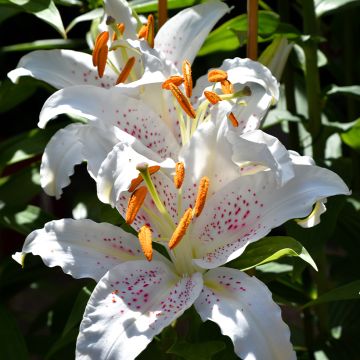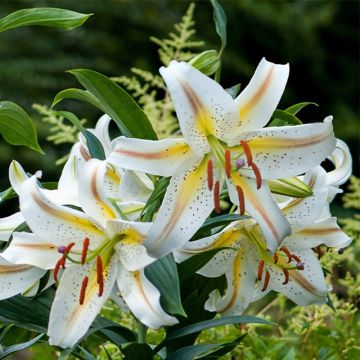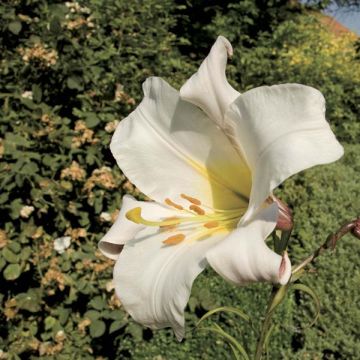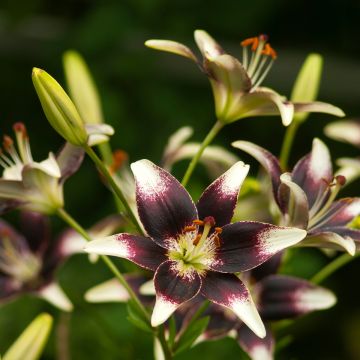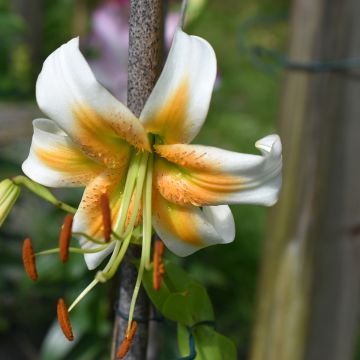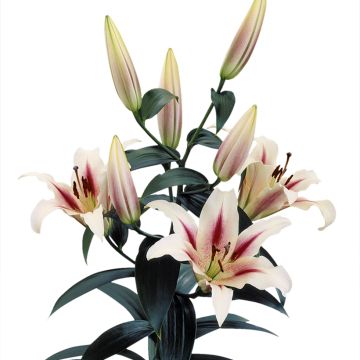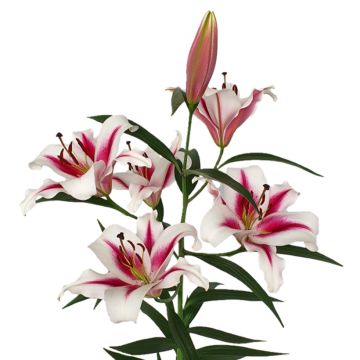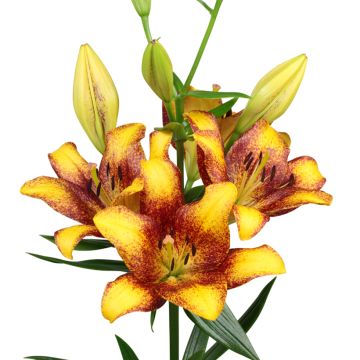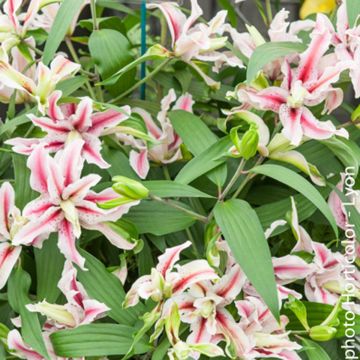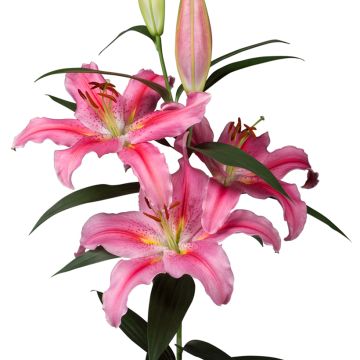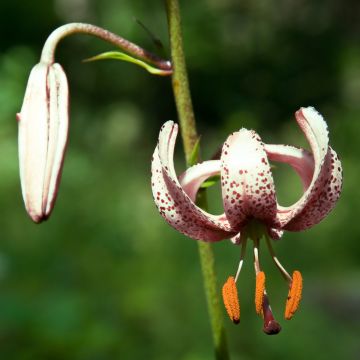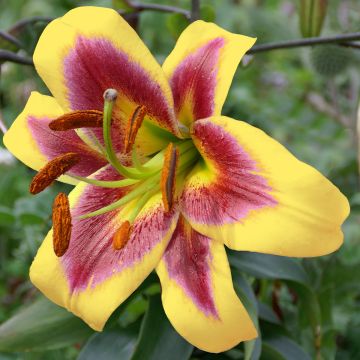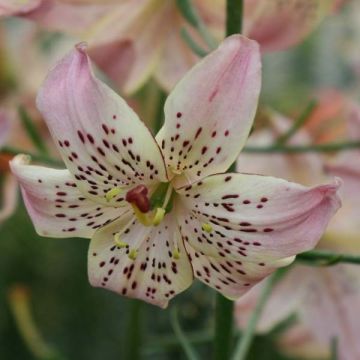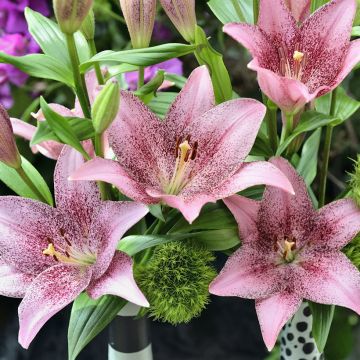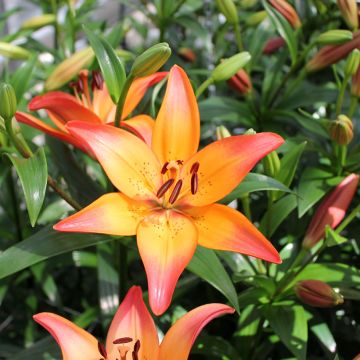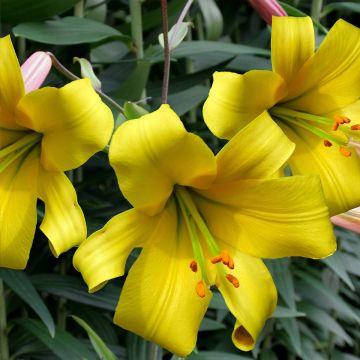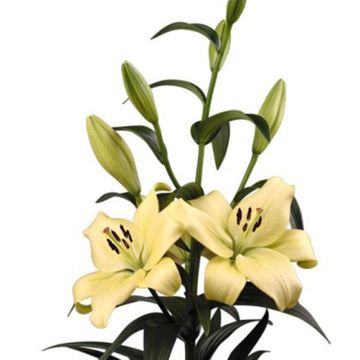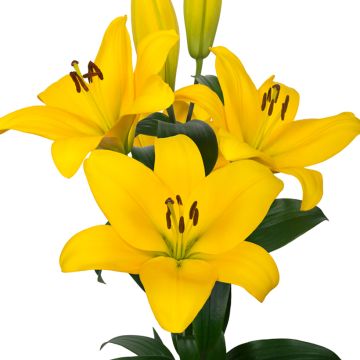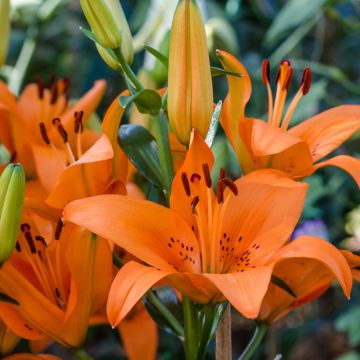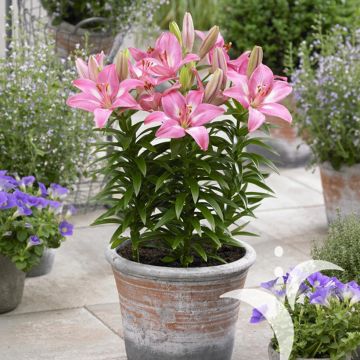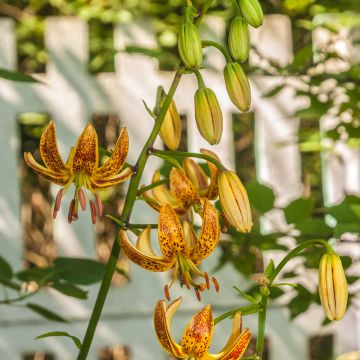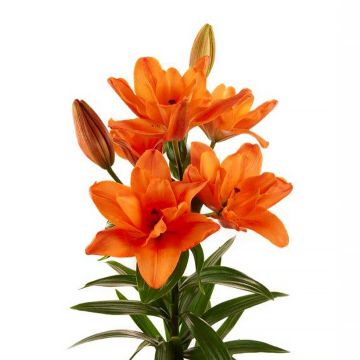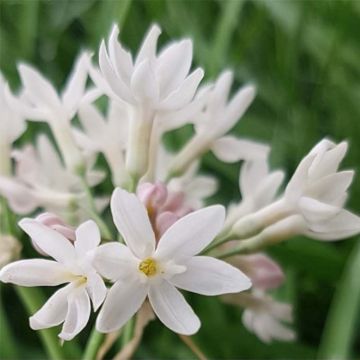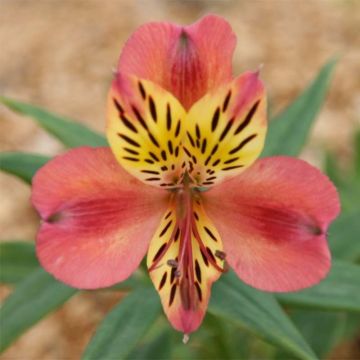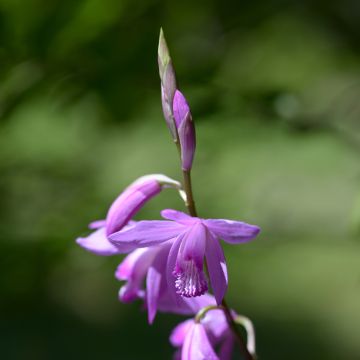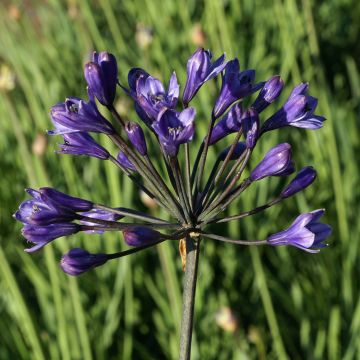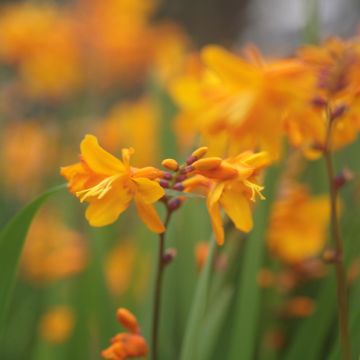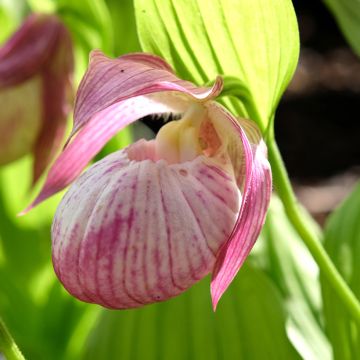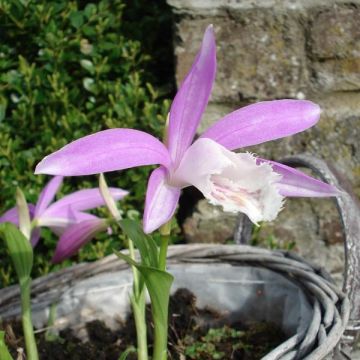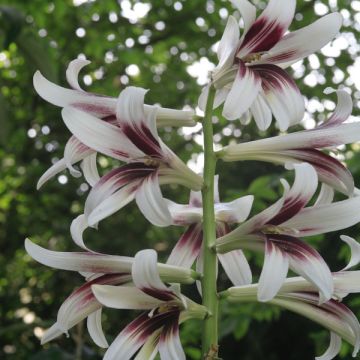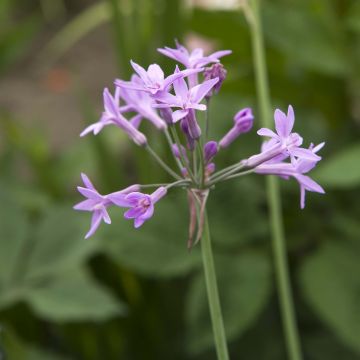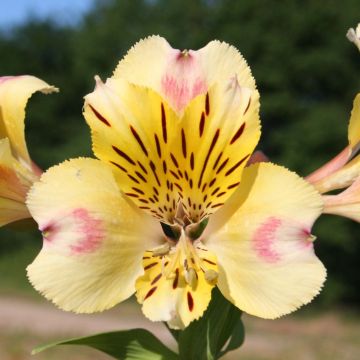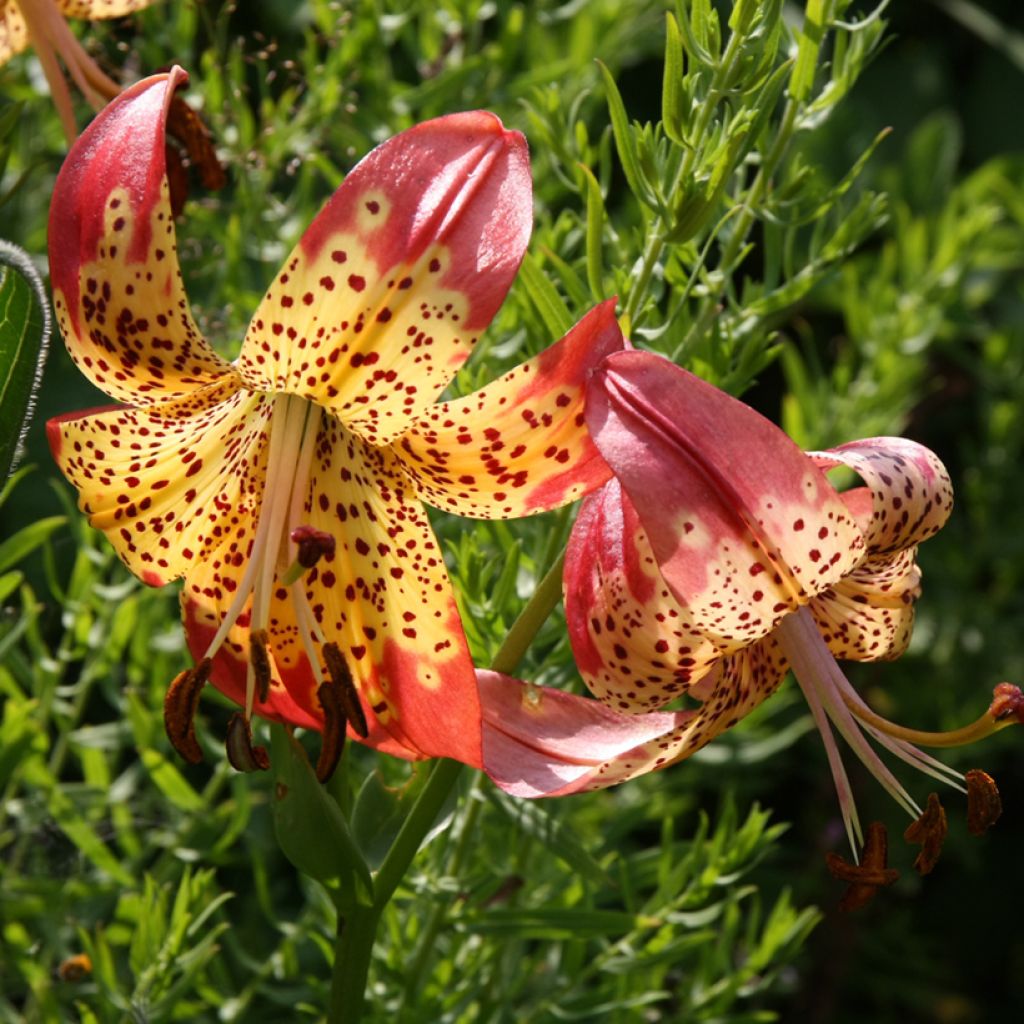

Lilium pardalinum
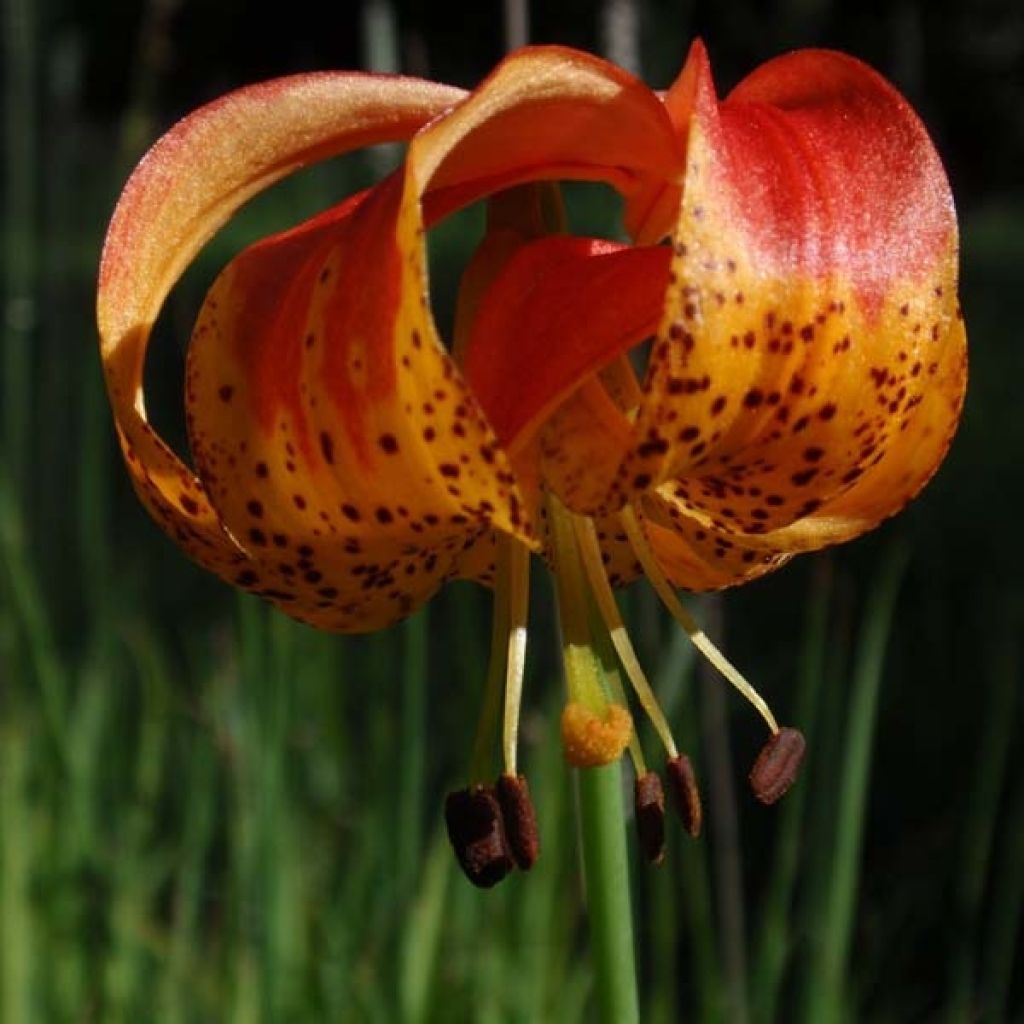

Lilium pardalinum
Lilium pardalinum
Lilium pardalinum
Leopard Lily, Panther Lily, American Tiger Lily
Why not try an alternative variety in stock?
View all →This plant carries a 6 months recovery warranty
More information
We guarantee the quality of our plants for a full growing cycle, and will replace at our expense any plant that fails to recover under normal climatic and planting conditions.
From €5.90 for pickup delivery and €6.90 for home delivery
Express home delivery from €8.90.

Does this plant fit my garden?
Set up your Plantfit profile →
Description
Lilium pardalinum, or Leopard Lily is a botanic species from the west coast of the United States. It flowers in summer, with fragrant and shiny flowers with recurved petals. The colours are stunning, a beautiful reddish-orange, speckled with brown, washed with yellow and salmon pink. This giant is one of the easiest species among the native lilies of California to grow. Much larger than the European Lilium martagon, it can become quite imposing. It is a majestic and underused plant.
This natural lily species is native to California, where it usually grows in wet areas. Lilium pardalinum blooms in July, with sturdy flower stalks reaching a minimum height of 180 cm (71in). A stem can bear a crown of 7 to 10 flowers, 5 to 10 cm (2 to 4in) in diameter. The leaves are narrow and long, shiny green and deciduous. They are arranged in whorls, sometimes almost spiralled.
The leopard lily and martagon lilies are a classic choice for old-style gardens. They are perfect for woodland edges, well-drained slopes, and slightly wild meadow areas. You can grow these lilies with perennial plants as they appreciate having their base in the shade. They will thrive in moist rock gardens and containers, and bring a very refined touch to bouquets. Be aware that there is another "leopard lily," Belamcanda chinensis, which belongs to the Iridaceae family. Although they should not be confused, nothing is stopping you from appreciating both and growing them in the same garden.
Report an error about the product description
Plant habit
Flowering
Foliage
Botanical data
Lilium
pardalinum
Liliaceae
Leopard Lily, Panther Lily, American Tiger Lily
Cultivar or hybrid
Other Lilies A to Z
Planting and care
Lilium pardalinum needs moist soil before flowering and dry soil after flowering and during winter, perfectly drained and alkaline. This lily establishes itself a little more slowly than Asian, trumpet or oriental lilies. It may take an extra season before flowering and planting conditions must be right. This lily sulks when it is moved and needs time to settle. It must have good drainage, gravelly soil is perfect, so that the bulbs are not in an overly wet substrate during their dormant period after flowering. It is strongly advised not to use humus-rich compost for planting, but adding well-rotted compost or leaf mold in autumn is a good idea, as it is a hungry plant. It should be planted in full sun or partial shade, preferably in spring, planting the bulbs 15 cm (6in) deep in a pocket of soil mixed with leaf mold and gravel. Surround them with a sand layer to prevent rotting and slug attacks while allowing them to grow more easily. Mark the planting location as vegetation only starts in April. If red beetles appear, treat them immediately as they are lily beetles whose larvae can devour all the leaves. The most effective method is to catch them manually but be careful as they drop as soon as they are touched. After flowering, it is a good idea to cut the faded flowers halfway to keep the bed beautiful during the summer.
Planting period
Intended location
Care
This item has not been reviewed yet - be the first to leave a review about it.
Hardy summer bulbs
Haven't found what you were looking for?
Hardiness is the lowest winter temperature a plant can endure without suffering serious damage or even dying. However, hardiness is affected by location (a sheltered area, such as a patio), protection (winter cover) and soil type (hardiness is improved by well-drained soil).

Photo Sharing Terms & Conditions
In order to encourage gardeners to interact and share their experiences, Promesse de fleurs offers various media enabling content to be uploaded onto its Site - in particular via the ‘Photo sharing’ module.
The User agrees to refrain from:
- Posting any content that is illegal, prejudicial, insulting, racist, inciteful to hatred, revisionist, contrary to public decency, that infringes on privacy or on the privacy rights of third parties, in particular the publicity rights of persons and goods, intellectual property rights, or the right to privacy.
- Submitting content on behalf of a third party;
- Impersonate the identity of a third party and/or publish any personal information about a third party;
In general, the User undertakes to refrain from any unethical behaviour.
All Content (in particular text, comments, files, images, photos, videos, creative works, etc.), which may be subject to property or intellectual property rights, image or other private rights, shall remain the property of the User, subject to the limited rights granted by the terms of the licence granted by Promesse de fleurs as stated below. Users are at liberty to publish or not to publish such Content on the Site, notably via the ‘Photo Sharing’ facility, and accept that this Content shall be made public and freely accessible, notably on the Internet.
Users further acknowledge, undertake to have ,and guarantee that they hold all necessary rights and permissions to publish such material on the Site, in particular with regard to the legislation in force pertaining to any privacy, property, intellectual property, image, or contractual rights, or rights of any other nature. By publishing such Content on the Site, Users acknowledge accepting full liability as publishers of the Content within the meaning of the law, and grant Promesse de fleurs, free of charge, an inclusive, worldwide licence for the said Content for the entire duration of its publication, including all reproduction, representation, up/downloading, displaying, performing, transmission, and storage rights.
Users also grant permission for their name to be linked to the Content and accept that this link may not always be made available.
By engaging in posting material, Users consent to their Content becoming automatically accessible on the Internet, in particular on other sites and/or blogs and/or web pages of the Promesse de fleurs site, including in particular social pages and the Promesse de fleurs catalogue.
Users may secure the removal of entrusted content free of charge by issuing a simple request via our contact form.
The flowering period indicated on our website applies to countries and regions located in USDA zone 8 (France, the United Kingdom, Ireland, the Netherlands, etc.)
It will vary according to where you live:
- In zones 9 to 10 (Italy, Spain, Greece, etc.), flowering will occur about 2 to 4 weeks earlier.
- In zones 6 to 7 (Germany, Poland, Slovenia, and lower mountainous regions), flowering will be delayed by 2 to 3 weeks.
- In zone 5 (Central Europe, Scandinavia), blooming will be delayed by 3 to 5 weeks.
In temperate climates, pruning of spring-flowering shrubs (forsythia, spireas, etc.) should be done just after flowering.
Pruning of summer-flowering shrubs (Indian Lilac, Perovskia, etc.) can be done in winter or spring.
In cold regions as well as with frost-sensitive plants, avoid pruning too early when severe frosts may still occur.
The planting period indicated on our website applies to countries and regions located in USDA zone 8 (France, United Kingdom, Ireland, Netherlands).
It will vary according to where you live:
- In Mediterranean zones (Marseille, Madrid, Milan, etc.), autumn and winter are the best planting periods.
- In continental zones (Strasbourg, Munich, Vienna, etc.), delay planting by 2 to 3 weeks in spring and bring it forward by 2 to 4 weeks in autumn.
- In mountainous regions (the Alps, Pyrenees, Carpathians, etc.), it is best to plant in late spring (May-June) or late summer (August-September).
The harvesting period indicated on our website applies to countries and regions in USDA zone 8 (France, England, Ireland, the Netherlands).
In colder areas (Scandinavia, Poland, Austria...) fruit and vegetable harvests are likely to be delayed by 3-4 weeks.
In warmer areas (Italy, Spain, Greece, etc.), harvesting will probably take place earlier, depending on weather conditions.
The sowing periods indicated on our website apply to countries and regions within USDA Zone 8 (France, UK, Ireland, Netherlands).
In colder areas (Scandinavia, Poland, Austria...), delay any outdoor sowing by 3-4 weeks, or sow under glass.
In warmer climes (Italy, Spain, Greece, etc.), bring outdoor sowing forward by a few weeks.

































